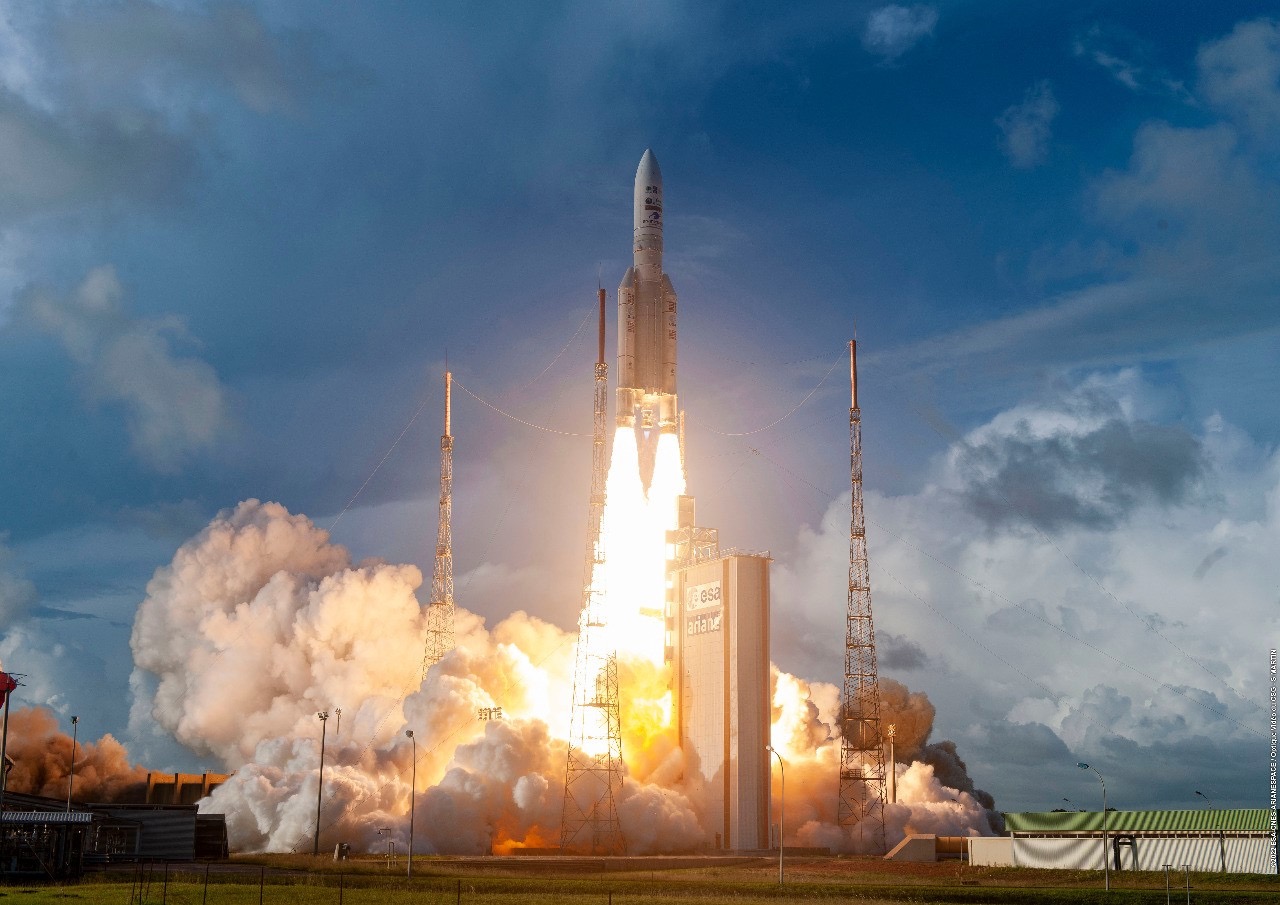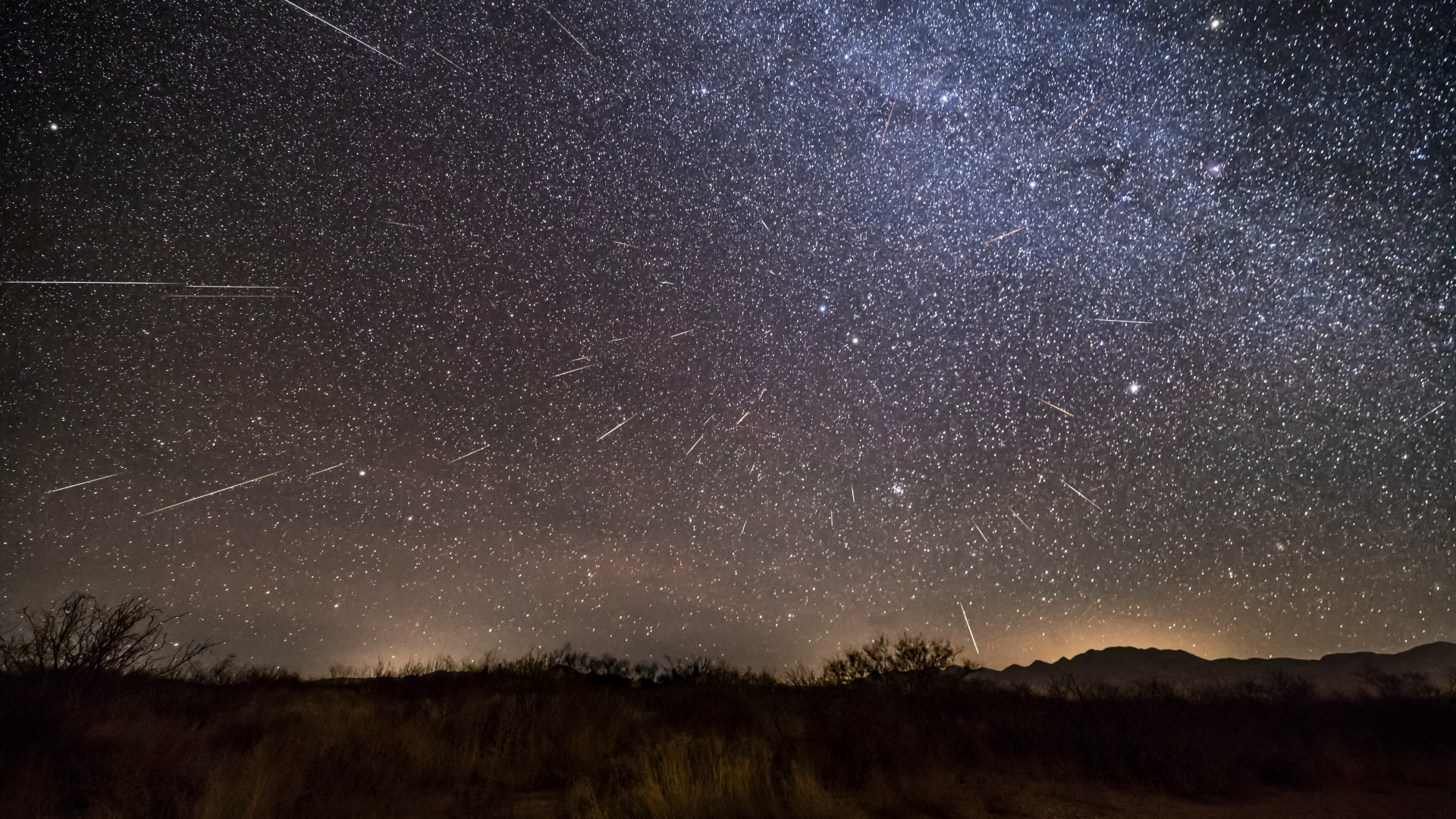Powerful Ariane 5 rocket launches 3 satellites to orbit (video)
A powerful European rocket sent three satellites to Earth orbit on Tuesday (Dec. 13).
An Ariane 5 rocket lifted off from Europe's Spaceport in French Guiana on Tuesday at 3:30 p.m. EST (2030 GMT or 5:30 p.m. local time) .
The rocket's star payload was Eumetsat's Meteosat Third Generation (MTG) Imager-1, which will allow for "rapid detection and forecasting of severe weather events," according to a statement by Arianespace, the French company that operates the Ariane 5.
The newest generation of these satellites includes two new instruments, an imager and a lightning imager, for higher-quality data to improve weather forecasting, according to a European Space Agency (ESA) statement.
Related: Ariane 5 rocket launches biggest Eutelsat satellite ever

The Ariane 5 also boosted the Galaxy 35 and Galaxy 36 geosynchronous communications satellites to orbit on behalf of Intelsat, to replace the company's aging Galaxy 3C and Galaxy 28 satellites, respectively. (Intelsat has been refreshing its satellite fleet since 2020, and these satellites are the fifth and sixth of the refresh series.)
The two Galaxy satellites "will provide dedicated North American links to broadcasters, allowing them to air live events and programs including sports, entertainment and breaking news coverage," Arianespace officials stated.
Breaking space news, the latest updates on rocket launches, skywatching events and more!
Galaxy 35 was deployed into geostationary transfer orbit (GTO) about 27 minutes after liftoff, and Galaxy 36 followed suit four minutes later. The Eumetsat craft was deployed into GTO as planned just under 35 minutes after launch. Together, all three satellites tipped the scales at 24,189 pounds (10,972 kilograms), according to Arianespace.
The Ariane 5 ECA variant being used for the launch is on the taller side this time around, ESA officials note. (ECA stands for Evolved Cryogenic, model A.)
The 173-foot (53 meters) rocket that flew on Tuesday sports a "raising cylinder" below the fairing in which the satellites are stored, along with an adapter that allowed the Intelsat satellites to be stacked above. Ariane 5 ECA can range between 166 to 174 feet (50.5 to 53 meters) in height, according to ESA and Arianespace statistics.
Editor's note: This story was updated at 4:18 p.m. EST on Dec. 13 with news of successful launch and satellite deployments.
Elizabeth Howell is the co-author of "Why Am I Taller?" (ECW Press, 2022; with Canadian astronaut Dave Williams), a book about space medicine. Follow her on Twitter @howellspace. Follow us on Twitter @Spacedotcom or Facebook.

Elizabeth Howell (she/her), Ph.D., was a staff writer in the spaceflight channel between 2022 and 2024 specializing in Canadian space news. She was contributing writer for Space.com for 10 years from 2012 to 2024. Elizabeth's reporting includes multiple exclusives with the White House, leading world coverage about a lost-and-found space tomato on the International Space Station, witnessing five human spaceflight launches on two continents, flying parabolic, working inside a spacesuit, and participating in a simulated Mars mission. Her latest book, "Why Am I Taller?" (ECW Press, 2022) is co-written with astronaut Dave Williams.
